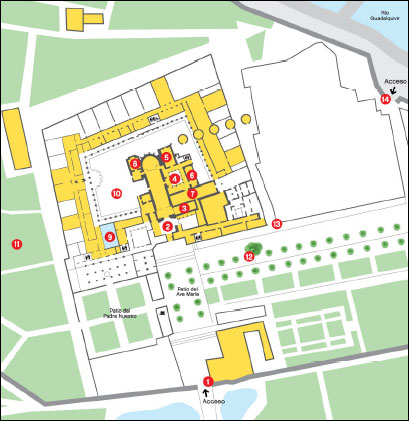
 |
|
|
10.- CLAUSTRÓN (LARGE CLOISTERS) |
|
|
The arrangement of the large cloisters is due to the monks' individual cells. Remains of the original building are only conserved in the eastern sector. Important modifications were carried out during the French invasion and the time of the factory (19th and 20th centuries), when the cloister practically disappeared. It was rebuilt for use as exhibition halls during the recovery of the Cartuja for cultural purposes prior to the Universal Exhibition of 1992. The British-style cone-shaped kilns were installed in the first decade of the 20th century. With time, they have become an emblematic icon of the monastery.
|